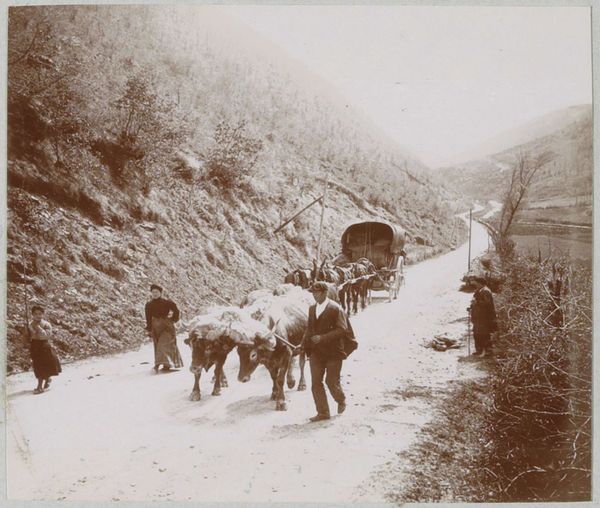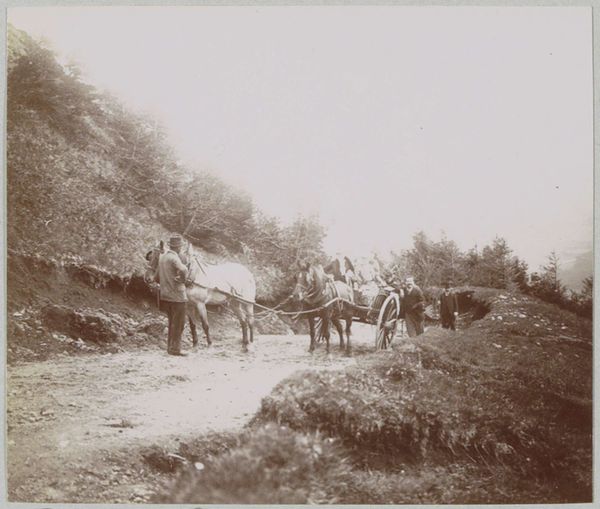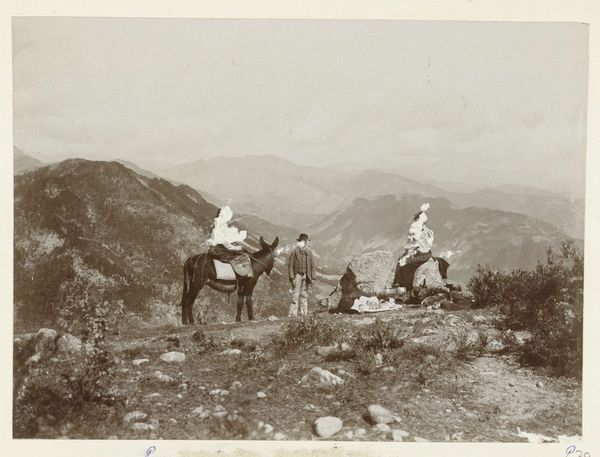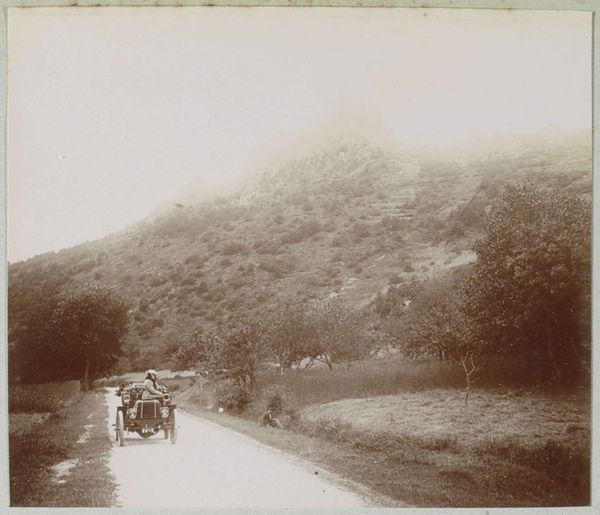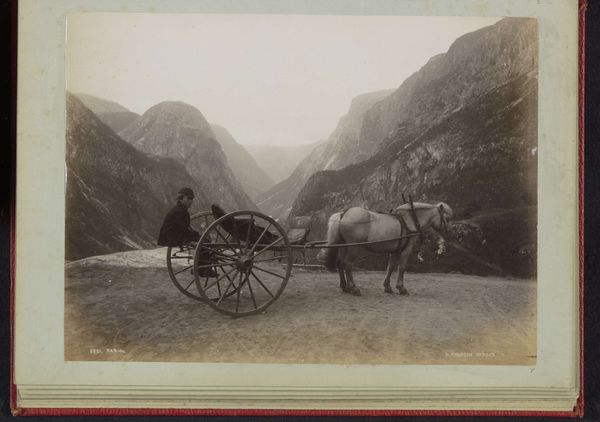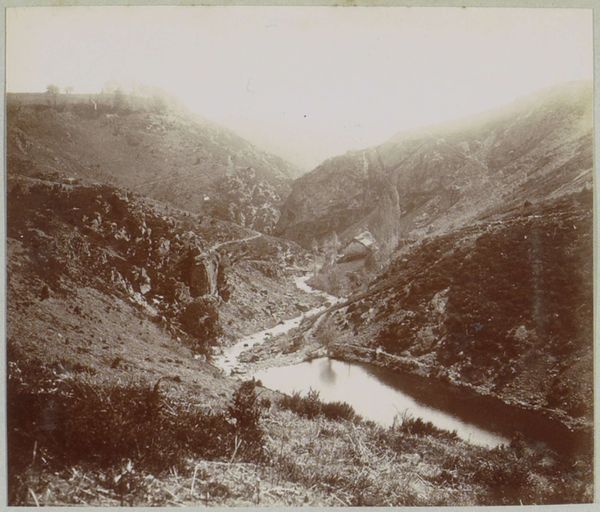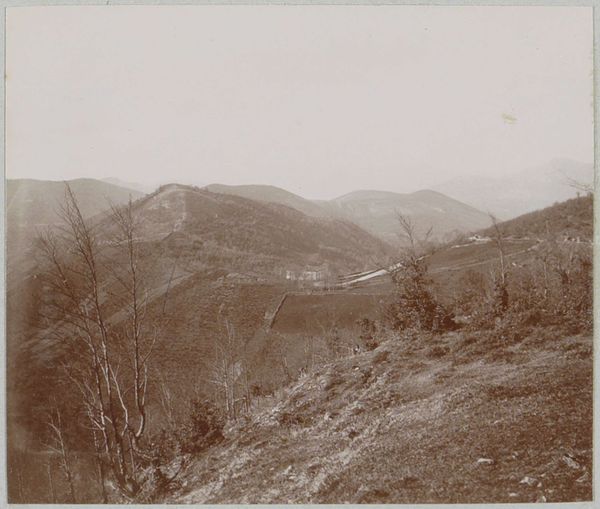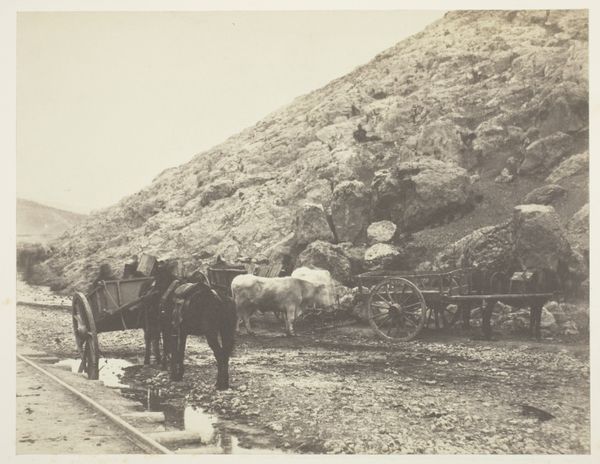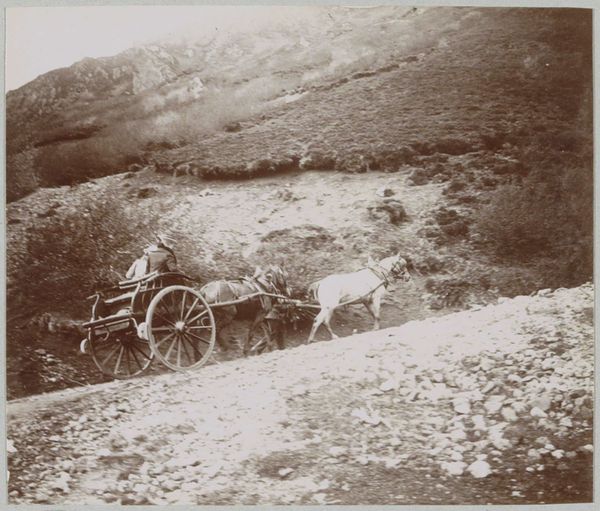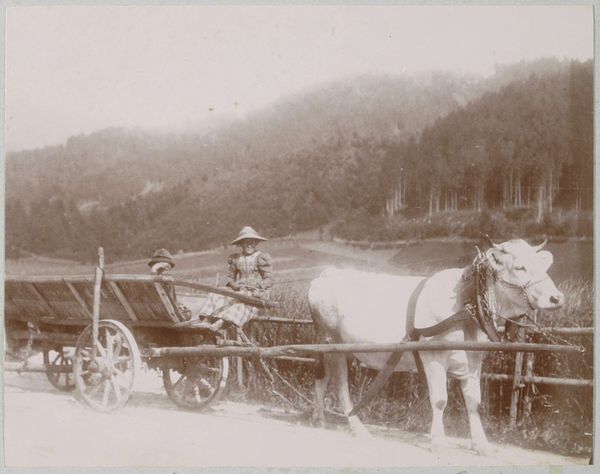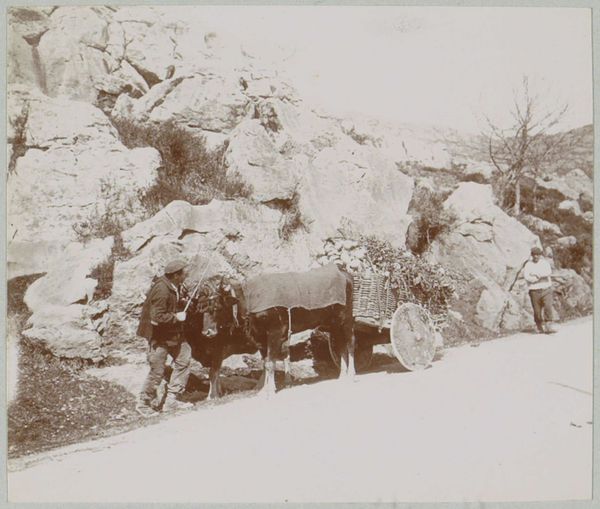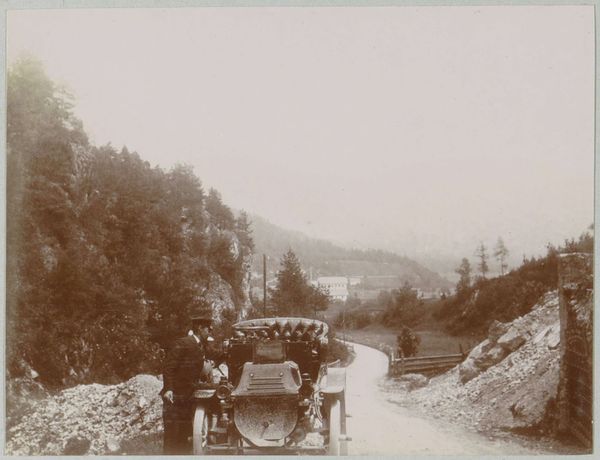
Man en een vrouw met paard en wagen op een landweg, vermoedelijk in de Auvergne 1902
0:00
0:00
photography, gelatin-silver-print
#
landscape
#
charcoal drawing
#
photography
#
gelatin-silver-print
#
genre-painting
#
realism
Dimensions: height 70 mm, width 83 mm
Copyright: Rijks Museum: Open Domain
Editor: Delizy’s "Man en een vrouw met paard en wagen op een landweg, vermoedelijk in de Auvergne," captured in 1902, presents an interesting study in gelatin-silver print. My immediate impression is one of profound labor against a harsh landscape, yet tinged with a certain pictorialist softness. Curator: Indeed. The composition itself— the winding road snaking into the distance, the deliberate placement of the figures and cart in the foreground— achieves a powerful structural balance. The stark contrasts further reinforce the tonal unity. Editor: Beyond the pictorial qualities, I'm struck by the labor embedded in the image. Think about the manual processes required to capture this moment, the processing, the printing. The materiality speaks volumes about the daily grind depicted in the image itself. It forces me to consider the lived experience of those individuals within a demanding system. Curator: Undoubtedly, the figures appear somewhat subjugated within the vastness. The tonal values suggest a hierarchy: the earth tones representing the peasantry against the stark white of the sky and the towering cliff faces suggesting nature, and perhaps society, looming large. Semiotics allows us to perceive an implicit, coded relation in these compositional choices. Editor: I’m more interested in how those earth tones are created and applied! The material components, the specific blend of chemicals reacting to light... It highlights how photography at the time was still an act of intensive material production. Also consider how the limited tonal range reflects on technological capabilities dictating aesthetic styles and the realities being represented. Curator: One could even propose a tension between romanticism and realism. The picturesque vista hints at idealized representation of the landscape, and this could be seen as contrasting starkly to the harsh realities of working class life it depicts. But a close viewing complicates any clear assignment into either category. Editor: For me, it comes down to appreciating how the constraints and potential of early photographic technology shaped not just *what* was depicted but *how* these subjects were portrayed and contextualized socially. The production value inherent is deeply informative, I’d say, just like the location is to a travel guide. Curator: Delizy’s work demonstrates how we engage our perception with reality, translating what we perceive visually onto new interpretive frameworks by asking how its photographic techniques align with formal composition or reflect its thematic concern with humanity, in that order. Editor: Perhaps understanding its socio-technological foundations alongside the inherent symbolism would broaden the dialogue about photography of the era even further.
Comments
No comments
Be the first to comment and join the conversation on the ultimate creative platform.
